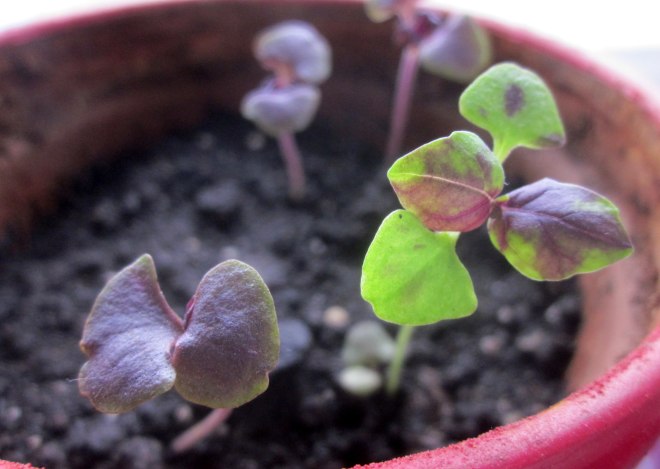Catnip is a fun plant to grow indoors or out, and isn’t just for the cats. It’s actually an herb in the mint family and can be made into a tea. Catnip can also be a sleep aid for younger children, while providing relief from menstrual cramps in women and teens.
Growing catnip from seed, for whatever purpose, isn’t too terribly hard, but does have some challenges. Germination is low and can take near a month, so it’s usually better to start with a propagated plant. Personally, I like a challenge, so I purchased Organic Catnip Herb Seeds from Ohio Heirloom Seeds on Amazon.
After several sprouts germinated and I had gotten past the hardest part of growing catnip, I ran into another challenge: My cats. Obviously this was not a plant I could have in areas the cats could reach or even smell, which isn’t really anywhere in the house. My only option was upstairs on a high shelf, behind a closed door, where the cats only go when supervised. It really was the only option, sad to say, as anywhere else the cats will destroy it or destroy half the house trying.
While there have been a few accidents when a cat found the magic plant and chowed what he could before getting caught, the two containers we planted last winter are still thriving. They get trimmed about once a month for tea, with the cats getting stems and occasional leaves here and there. We’ve also dried some catnip in case these plants meet and untimely demise.
If you have a proper location and patience, starting catnip from seed can be a fun experience and great reward.








